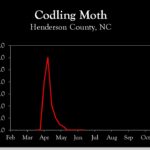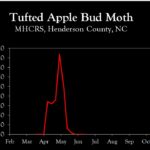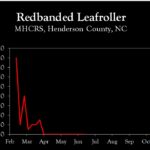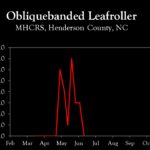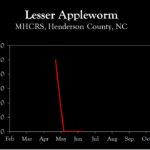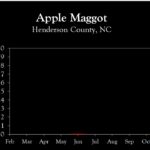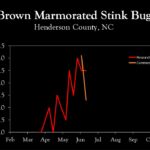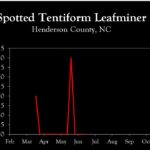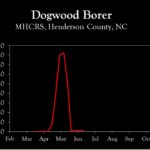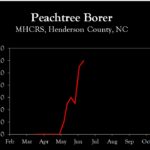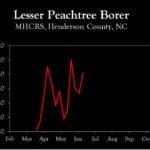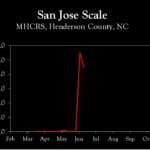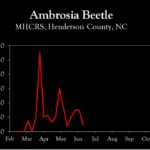WNC Orchard Insect Pest Populations – July 5, 2022
go.ncsu.edu/readext?873253
en Español / em Português
El inglés es el idioma de control de esta página. En la medida en que haya algún conflicto entre la traducción al inglés y la traducción, el inglés prevalece.
Al hacer clic en el enlace de traducción se activa un servicio de traducción gratuito para convertir la página al español. Al igual que con cualquier traducción por Internet, la conversión no es sensible al contexto y puede que no traduzca el texto en su significado original. NC State Extension no garantiza la exactitud del texto traducido. Por favor, tenga en cuenta que algunas aplicaciones y/o servicios pueden no funcionar como se espera cuando se traducen.
Português
Inglês é o idioma de controle desta página. Na medida que haja algum conflito entre o texto original em Inglês e a tradução, o Inglês prevalece.
Ao clicar no link de tradução, um serviço gratuito de tradução será ativado para converter a página para o Português. Como em qualquer tradução pela internet, a conversão não é sensivel ao contexto e pode não ocorrer a tradução para o significado orginal. O serviço de Extensão da Carolina do Norte (NC State Extension) não garante a exatidão do texto traduzido. Por favor, observe que algumas funções ou serviços podem não funcionar como esperado após a tradução.
English
English is the controlling language of this page. To the extent there is any conflict between the English text and the translation, English controls.
Clicking on the translation link activates a free translation service to convert the page to Spanish. As with any Internet translation, the conversion is not context-sensitive and may not translate the text to its original meaning. NC State Extension does not guarantee the accuracy of the translated text. Please note that some applications and/or services may not function as expected when translated.
Collapse ▲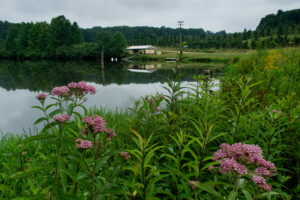 Second generation codling moth remains a potential threat throughout the region. Degree-day accumulations range from 1320 in Henderson County to about 1660 in Cleveland County. Under low population densities when a single insecticide application generally provides the necessary level of control, the optimum timing is between 1400 and 1450 DD after biofix. Hence, in Henderson County and similar elevations, that timing is this week – 1400 DD is predicted to occur on Friday. In lower elevation sites, an application targeting codling moth should be considered if one has not been made in the past week. Insecticidal control of second generation is generally not necessary in orchards using mating disruption, but pheromone trap captures should be used to verify low densities. Moth captures should remain below an average of 3 cumulative moths/trap in mating disruption orchards, otherwise an insecticide application may be warranted.
Second generation codling moth remains a potential threat throughout the region. Degree-day accumulations range from 1320 in Henderson County to about 1660 in Cleveland County. Under low population densities when a single insecticide application generally provides the necessary level of control, the optimum timing is between 1400 and 1450 DD after biofix. Hence, in Henderson County and similar elevations, that timing is this week – 1400 DD is predicted to occur on Friday. In lower elevation sites, an application targeting codling moth should be considered if one has not been made in the past week. Insecticidal control of second generation is generally not necessary in orchards using mating disruption, but pheromone trap captures should be used to verify low densities. Moth captures should remain below an average of 3 cumulative moths/trap in mating disruption orchards, otherwise an insecticide application may be warranted.
First Generation BMSB Adult Emergence
In lower elevation orchards, we are approaching the initial emergence of the first generation of brown marmorated stink bug (BMSB) emergence. This adult generation is the major cause of stink bug damage to mid- and late-maturing apple cultivars. Emergence begins at about 750 DD (°C) from 4 April, which is predicted to occur in about 7 days in Cleveland County and similar elevations. It will be almost another 3 weeks before emergence begins in Henderson and Wilkes Counties. The solid curve in the figure below depicts percent emergence of first generation adults, and the arrows show cumulative DDs in Henderson, Wilkes and Cleveland Counties.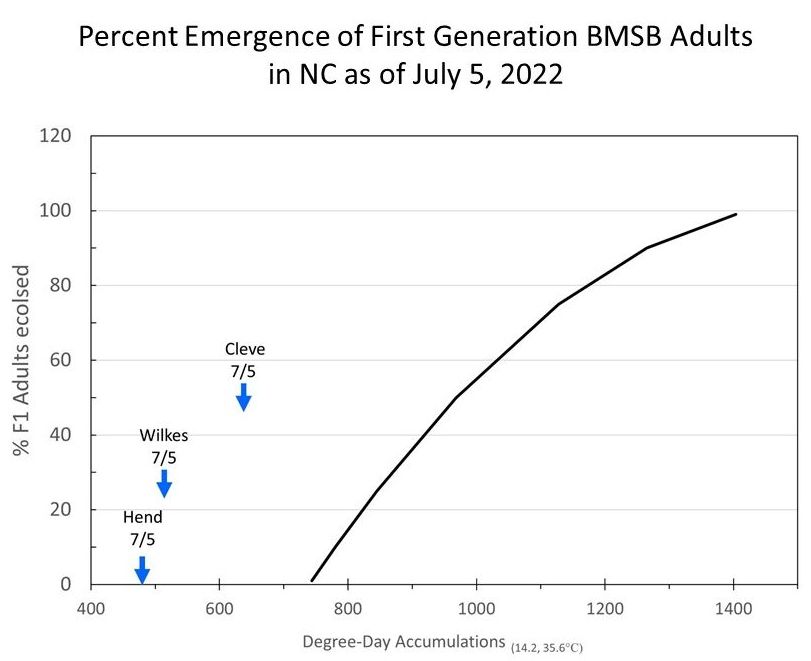
Other Pests
Populations of secondary pests including aphids, leafhoppers, mites and Japanese beetles have been very spotty this year. With the frequency of rain increasing in many areas, Japanese beetle numbers may be increasing. At the research station in Mills River, second generation adults of San Jose scale are in the second week of emergence. Control at this time of the year is generally not necessary when populations were suppressed early in the year. Finally, so far we have not seen nor been made aware of any apple maggot activity.
Learn more about southeastern apple insect pests at the Apple Insect Management page.
2022 Average Weekly Trap Captures
| HENDERSON COUNTY | |||
| Insects per trap | |||
| Jun 20 | Jun 27 | Jul 5 | |
| Codling moth | 0.0 | 0.0 | 0.0 |
| Oriental fruit moth | 19.0 | 20.5 | 17.0 |
| Tufted apple bud moth | 0.0 | 0.0 | 0.0 |
| Redbanded leafroller | 0.0 | 0.0 | 0.0 |
| Obliquebanded leafroller | 3.0 | 3.0 | 0.0 |
| Lesser appleworm | 0.0 | 0.0 | 0.0 |
| Apple maggot (abandoned and research orchards) | 0.0 | 0.0 | 0.0 |
| Brown marmorated stink bug (commercial) | – | 3.1 | 1.3 |
| Brown marmorated stink bug (unsprayed) | 3.0 | 2.5 | 2.5 |
| Spotted tentiform leafminer | 0.0 | 0.0 | 0.0 |
| Dogwood borer | 0.0 | 1.0 | 1.0 |
| Peachtree borer | 5.0 | 11.0 | 12.0 |
| Lesser peachtree borer | 30.0 | 27.0 | 41.0 |
| San Jose scale | 0.0 | 27.5 | 22.5 |
| Ambrosia beetle (all species) | 3.0 | 3.0 | 1.0 |
*Note that these averages illustrate only the timing of insect emergence and fluctuations in populations, and are not representative of population levels in any given orchard. The only way to have an accurate assessment of an individual orchard’s populations is to set up traps in that orchard.
2022 Accumulated Degree Days
| HENDERSON COUNTY | ||||
| Jun 20 | Jun 27 | Jul 5 | ||
| Codling moth (Biofix: April 22) | 974 | 1126 | 1320 | |
| Oriental fruit moth (Biofix: April 12) | 1359 | 1541 | 1775 | |
| Tufted apple bud moth (Biofix: April 27) | 1161 | 1343 | 1577 | |



